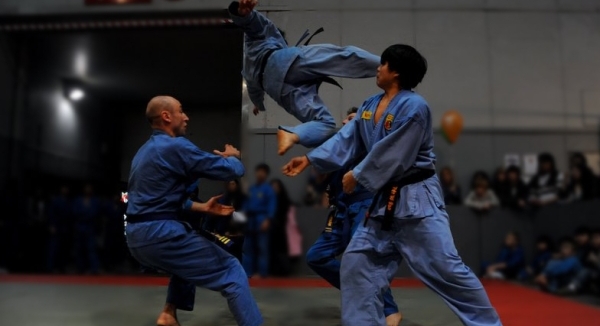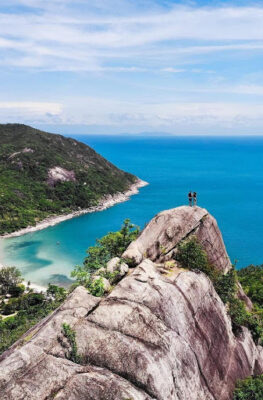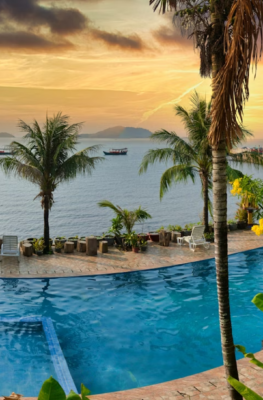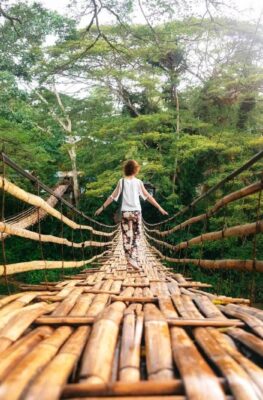Published on December 11, 2009

Southeast Asia has given birth to many wonderful things: fiery food, stunning architecture and holistic healing systems. Added to this cultural smorgasbord is a range of elaborate, highly effective fighting systems ranging from the devastating simplicity of Muay Thai to the esoteric elegance of Indonesia’s deadly Pencak Silat.
Historically, the battlefield was the traditional laboratory of fighting techniques, a place where pragmatism ruled. Techniques were tested in battle. Those that worked were retained and refined, new moves – often learned from the enemy the hard way – were assimilated, and applications that failed were discarded.
Due to frequent wars, centuries of cross-border trade and cultural and linguistic ties the martial arts of Thailand, Cambodia, Laos and Myanmar share a great similarity. While their origins are typically shrouded in mystery, they all derive from the same tree of fighting systems which first started to be formalised some seven or eight centuries ago.
Globally speaking, Muay Thai is Southeast Asia’s best known and most widely practiced system. Renowned for its power and simplicity, the eight-point system relies on the use of fists, knees, elbows and feet. Muay Thai’s straightforward responses to a broad range of attacks set it apart from the more complicated Chinese and Japanese martial arts. Muay Thai originated in the Thai military several centuries ago (alongside Krabi Krabong, the traditional Thai weapons system), but owes its roots to Muay Boran, or ‘ancient boxing’, a similar system which allows the use of head strikes and features lower stances.
Cambodia has its own pool of systems, such as Kun Khmer, Pradal Serey and Bokator. Kun Khmer is very similar to Muay Thai and has become Cambodia’s national ring sport. Bokator claims to be the progenitor of the fighting systems of both countries and is depicted in bas-relief carvings at Angkor Wat. The system is more flourished than either of its cousins and features weapons, grappling and ground fighting techniques.
Myanmar’s closest martial sibling is Lethwei, which like Bokator allows head butts, and the country’s systems are loosely grouped as Thaing. While these styles exhibit the pugilistic pragmatism that underpins many Southeast Asian fighting systems, they have a much greater focus on animal movements and characteristics.
Bando adds the head to the fighter’s repertoire of techniques, has no weight categories and is typically fought bare-fisted. Annual bouts take place between Thailand and Myanmar at the Thai border town of Mae Sot, where Muay Thai and Bando or Lethwei fighters ditch their gloves for hemp wraps.
Muay Lao, which remains the most undeveloped style in this umbrella of arts due to its relative obscurity, was featured at the 2009 Asian Games in Vientiane.
While Muay Thai is be the best-known Southeast Asian fighting system, the Filipino martial arts – Kali, Scrim and Arnos – have become the bedrock of many modern weapons systems and are the art of choice for many professional bodyguard or Special Forces operative. The western world’s first recorded run in with the island nation’s fearsome martial prowess was when the Spanish conquistadors landed in Cuba in 1521, resulting in the Battle of Mactan and the death of explorer Ferdinand Magellan.
These arts retain their battlefield origins and techniques include empty hand, biting, throwing, groundwork and plenty of weapons. While the rattan stick is the quintessential Kali weapon, it is really a training device which gives way to an ironwood stick, staff, knife or sword in a real fight.
Indonesia’s Pencak Silat is perhaps the region’s most exotic fighting system. It is steeped in animist tradition and draws on elemental forces and warrior spirits. But despite this mystical foundation the system is devastating and features a repertoire of weapons, chokes, throws and breaks. Techniques are typically designed to maim or kill the opponent, as such practitioners are taught to refrain from fighting unless it is the only remaining option at which point no holds are barred.
Silat has a strong focus on meditation and spiritual development and is a beautiful art to watch. It boasts scores of regional styles and has been developed into Silat Melayu in Malaysia.
Greg has lived in Bangkok for eight years. He recently updated the latest Insight Guides: Thailand’s Beaches and Islands and writes regularly for Travel + Leisure Southeast Asia, Bangkok Post, Business Times, South China Morning Post and Fah Thai. See thegreglowe.com for more info.






